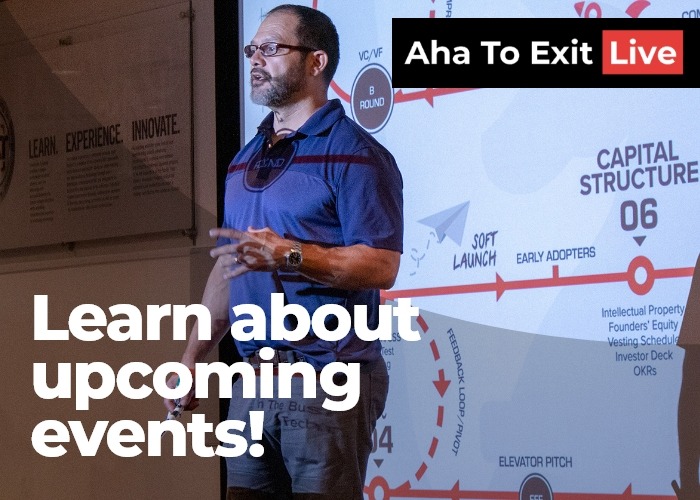No one is ever going to tell you you’re doing entrepreneurship wrong. It’s not something many entrepreneurs realize until some tipping point when they realize their fledgling enterprise is not robust enough to survive an undercutting competitor, the loss of a big client, or a rift within the team. The timing of events such as these can often be blamed as the reason it tanked a venture, but timing is also the solution to building a business that can withstand these forces.
How, and why? Until 2012, think tanks, incubators, and educators were only focused on what entrepreneurs needed to do, not when, contradicting the old adage: “Timing is everything!” If you’re asking why a process has not been created for entrepreneurs (until now), welcome to the club, because that’s the same question that inspired the creation of Aha To Exit. Our suspicion is that most authors in entrepreneurship are academics—individuals who’ve never cried in their pillows, risked their own capital, or launched a venture. So we’ve been revisiting and improving conventional business plans based on the what (think Business Model Canvas) without taking time to really evaluate the other crucial element: when.
Consider the level of risk involved in entrepreneurship, and the sheer commitment necessary. Putting in 70-80 hour work weeks— on something that you love—something that is going to require sacrifices, big ones. Devoting time outside of a day job, school, or both to bring your idea into fruition is crucial for founders to get to a point where they can add to the team. The first person you have to sell to will be your partner. Early legwork in establishing your company culture, principles, mission, and vision are all crucial steps to forming a team that can navigate the rest of the startup roadmap.
Imagine you’ve read every great entrepreneurship book (or maybe you have and don’t need an imagination): The Lean Startup, Business Model Generation, Zero to One, etc. You’ve completed a mind numbing amount of research and are ready to launch your product/service. Perhaps you’re a maker and developed a prototype before even looking at your market and the competitive landscape.
Rapid progress and sprinting to market to start pushing your product out and gaining users is not how to best navigate the problem of timing. This is natural amongst entrepreneurs and it’s something we’ve seen over and over again when analyzing failed startups. There is a process for entrepreneurship, and it’s important not to jump ahead of it. Timing is everything!
What do you do first?
You go back to the first chapters and re-read how to start a launch—but wait—there’s nothing there that speaks to the first move you’re going to have to take. Do you wing it? That’s a lot to risk given the timing, money, energy and sacrifices you’ve put into your dream.
No, you don’t wing it. You whip out your Google machine and search for something to tell you where to move first—warning: this is harder than playing chess with Gary Kasparov. What you’re going to discover is that the web is bankrupt of a step-by-step process to begin your launch. This can’t be true, right? There’s a process for everything—isn’t there?
What about a process?
Ahhhh, you found it! Aha To Exit has developed and tested the roadmap you’re looking for. We’ll give you the keys to the castle instead of leaving the answers shrouded in mystery. Here’s the world’s first-ever roadmap for innovators to become entrepreneurs: The Startup Roadmap.










